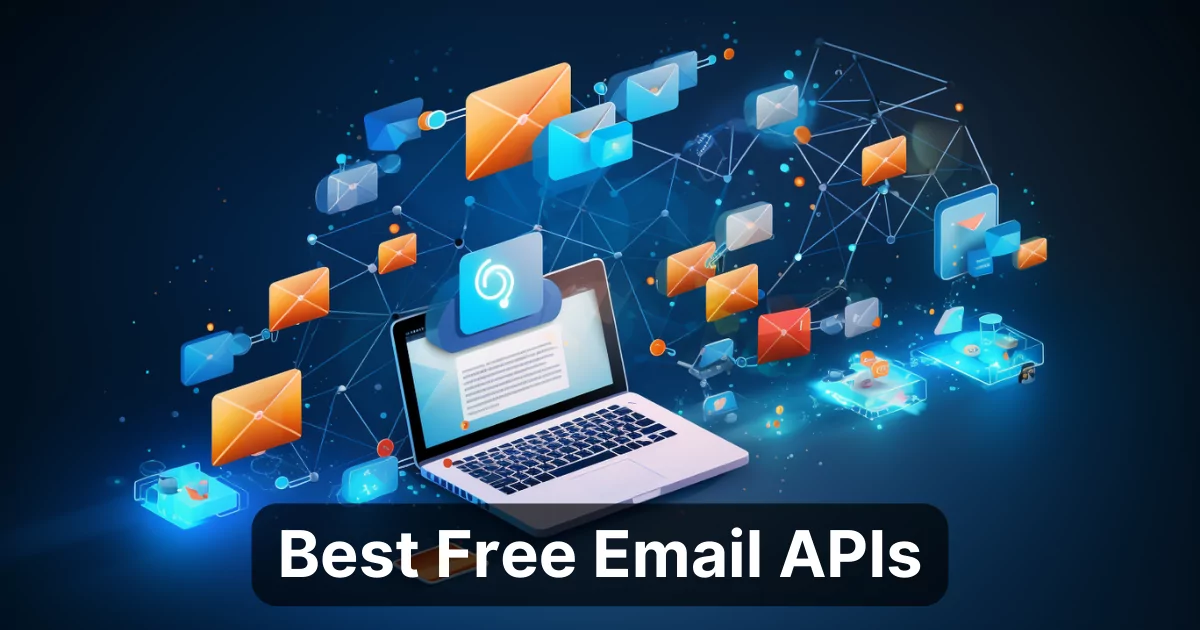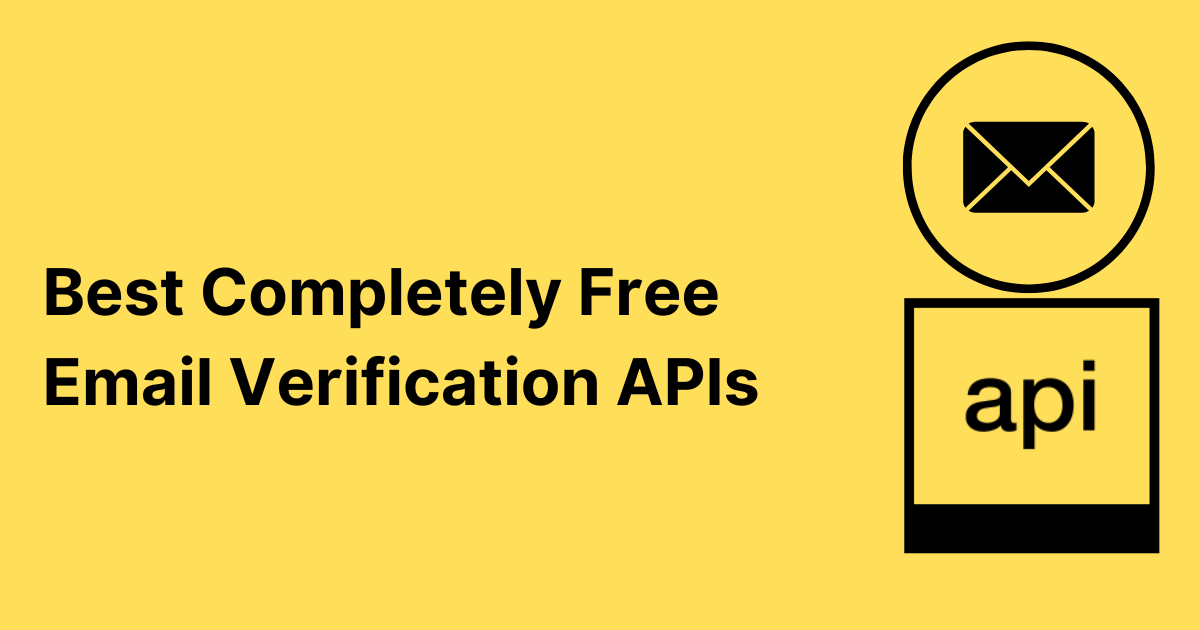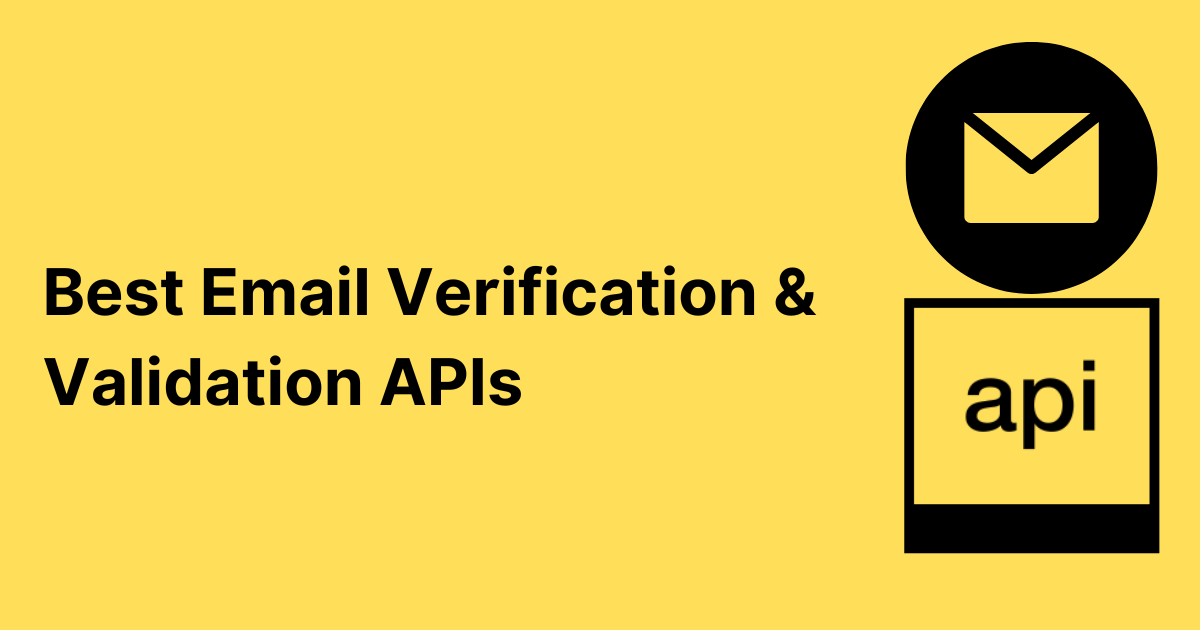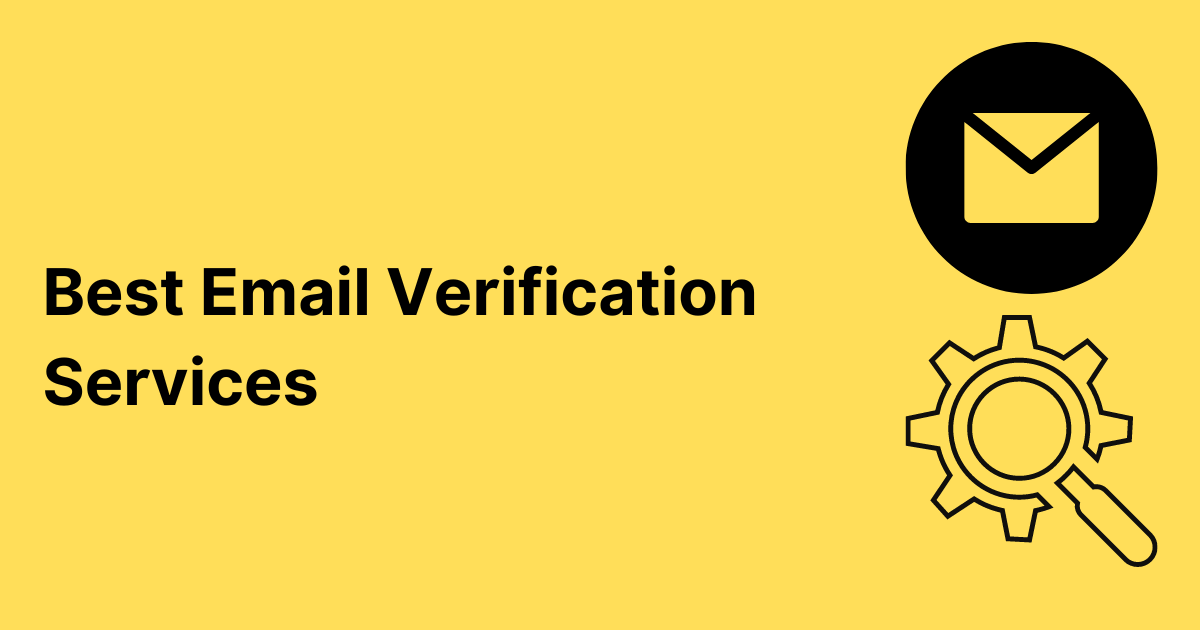In a hurry? Skim through our picks of the top email APIs for 2023 (click on a link to jump that section):
- Mailjet: Best for Transactional, large email sends
- SendGrid: Best for All-in-one email marketing platform
- Mailgun: Best for Detailed Event Tracking
- Postmark: Best for Providing in-depth content analysis
- MessageBird by SparkPost: Best for Consistent, reliable delivery
- MailerSend: Best for Real-Time Analytics
- AbstractAPI: Best for Email verification
- Mailboxlayer: Best for Free email verification
Email marketing is so much more than collecting and sending emails. It’s a science, it’s an art, it’s a labor of love. For many businesses, their email list is the lifeblood.
That’s why it’s so important to start off on the right foot and leverage an email API.
The good news?
You can get started with a killer email API for free.
In this article, we review some of the most popular email APIs, evaluate their free versions, and provide you with our consensus.
Let’s get to it.
Why Use a Free Email API?
First, let’s unpack why you should be using an Email API
Using a free Email API can offer several key advantages for individuals and businesses alike. Here are some compelling reasons why you should consider utilizing an Email API:
Improve Deliverability
One of the primary benefits of incorporating an Email API is the enhancement of email deliverability. APIs provide direct access to email servers, ensuring that your messages reach the intended recipients without being flagged as spam. This results in more of your emails landing in inboxes rather than getting lost in junk folders.
Remove Invalid Emails
An Email API can help you maintain a clean and up-to-date email list by easily identifying and removing invalid or non-existent email addresses. This ensures that your communication efforts are targeted and efficient.
Flexible Implementation
Email APIs offer a versatile and adaptable approach to integrating email services into your applications, websites, or platforms. They can be seamlessly integrated into your existing infrastructure, allowing for a smooth and tailored email communication process.
Scalability
As your email needs grow, Email APIs can scale with you. They provide the ability to handle a large volume of emails without a significant increase in costs or infrastructure changes, making them an ideal choice for businesses with evolving email requirements.
Cost-Effectiveness
Free Email APIs, as the name suggests, are budget-friendly options. They often have tiered pricing models that allow you to get started without a substantial upfront investment, making them suitable for startups and small businesses.
Flexibility and Customization
Email APIs empower you to customize the way you send, receive, and manage emails. You can create personalized templates, schedule emails, and implement advanced features to tailor your email communication to your specific needs.
Using a free Email API not only helps in improving email deliverability and list quality but also provides a cost-effective, scalable, and flexible solution for your email communication needs. This can be particularly advantageous for businesses looking to streamline their email processes while ensuring that their messages effectively reach their audience.
Features to Look for in a Free Email API
Email APIs come with all sorts of features. In general, a good email API will have the following features.
Email Sending and Receiving
A high-quality Email API should enable both sending and receiving emails. It should support sending transactional emails for real-time notifications and marketing campaigns to reach a broader audience. Additionally, it should allow receiving incoming emails through webhooks, enabling users to create custom email processing workflows.
Authentication and Security
Robust authentication and security features are essential. This includes the use of API keys or tokens to authenticate requests, ensuring that only authorized users can send emails via the API. Encryption of data in transit and support for industry-standard email authentication mechanisms like SPF (Sender Policy Framework), DKIM (DomainKeys Identified Mail), and DMARC (Domain-based Message Authentication, Reporting, and Conformance) is crucial for protecting email integrity and preventing spoofing.
Deliverability Management
Effective deliverability management tools are vital for maintaining a healthy sender reputation. The API should provide features for handling bounced emails, managing suppression lists to exclude recipients who have unsubscribed or marked emails as spam, and implementing feedback loops to handle recipient complaints and unsubscribe requests.
Tracking and Analytics
Tracking and analytics features are crucial for evaluating the success of your email campaigns. The API should provide detailed reporting on email performance, including metrics like open rates, click-through rates, conversion rates, and unsubscribe rates. This data allows you to measure the impact of your email efforts and make data-driven decisions for improvements.
Automation and Workflows
Email automation is a powerful feature that simplifies the process of sending emails triggered by specific events or user actions. The API should support workflow automation, allowing you to schedule and trigger emails automatically, such as welcome emails, abandoned cart reminders, or drip campaigns. This helps in nurturing leads and enhancing user engagement.
Integration
The Email API should seamlessly integrate with various programming languages and platforms, making it versatile and adaptable for different use cases. It should offer pre-built integrations with popular Customer Relationship Management (CRM) systems, e-commerce platforms, and marketing automation tools, facilitating data synchronization and campaign coordination.
User-Friendly API Documentation
Clear and comprehensive API documentation is crucial for developers. It should include detailed examples, code snippets, and explanations, making integration and troubleshooting straightforward. The documentation should serve as a valuable resource for developers working with the API.
Flexible Pricing
The pricing model should be transparent and aligned with your email volume and budget. Many Email APIs offer free tiers for lower email volumes, ensuring that small users can get started without significant costs. Clear pricing structures for larger enterprises help in budget planning and scalability.
Top Free Email API Services in 2024
1. Mailjet
Best for: Transactional, large email sends
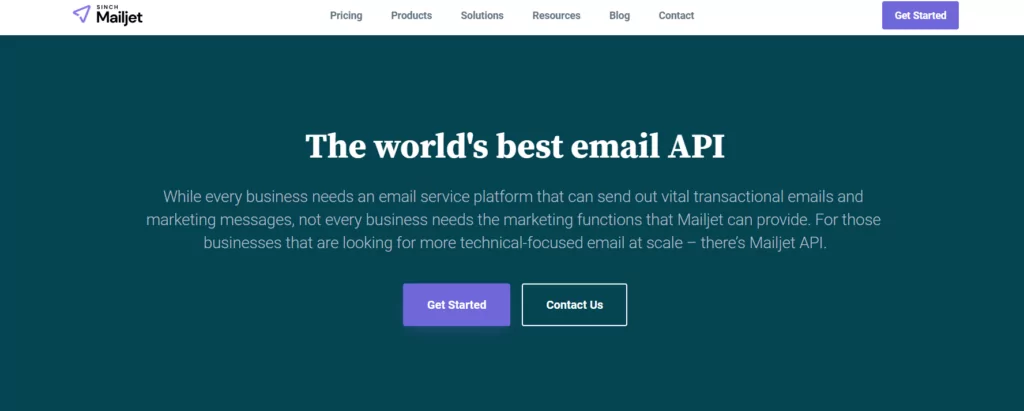
Mailjet is a versatile email marketing and transactional email service. It’s a great choice for small to large businesses seeking to engage customers and optimize email campaigns.
Interesting Features
- Robust Marketing Automation. I liked how Mailjet offers advanced marketing automation capabilities, allowing me to create complex workflows based on user behavior, events, and triggers. This feature simplifies the process of delivering targeted, personalized content to my subscribers.
- Transactional Email Integration. I was pleasantly surprised to discover that Mailjet seamlessly integrates with applications through its SMTP relay and API. This makes it an excellent choice for businesses that need to send transactional emails.
- Heatmaps. The real-time tracking and heatmap features stood out to me. You can get great insights into email engagement, helping understand how recipients interact with your messages, from opens to clicks. This feature is invaluable for optimizing campaigns.
- Compliance Tools: I found it reassuring that Mailjet offers tools for GDPR compliance and email security. These features help maintain the trust and privacy of subscribers, important today.
Potential Drawbacks
Mailjet does not offer an unlimited number of emails and can get a little pricey.
What do you get for free?
With Mailjet you get 200 emails per day or 6000 per month forever – that’s pretty sweet.
Pricing
Essentials ($15/mo) – 15,000 emails included per month, plus segmentation and email address verification.
Premium ($25/mo) – everything included in Essentials plus marketing automation, dynamic content, and AB testing.
Custom (Consultative) – discuss with Mailjet to determine the right plan.
You can also scale your email needs as a pay-as-you-grow arrangement.
2. SendGrid
Best for: All-in-one email marketing platform

SendGrid offers a powerful email delivery and marketing platform. It’s best suited for businesses of all sizes, particularly those seeking reliable email delivery and in-depth analytics.
Interesting Features
- High Email Deliverability: I liked how SendGrid’s infrastructure is optimized for high email deliverability. It minimizes the chances of your emails ending up in the dreaded spam folder, so that more of your messages reach the inbox.
- Advanced Analytics: SendGrid provides in-depth email analytics. You can track opens, clicks, bounces, and engagement trends. This data is invaluable for refining email campaigns and understanding audience behavior.
- Marketing Campaigns: SendGrid offers a robust marketing campaign feature, allowing you to create and automate marketing emails. The ability to segment your audience and personalize content was a standout for me.
- API Integration: SendGrid is developer-friendly, you can leverage their restful API and SMTP in multiple languages. This will make it pretty smooth when it comes to integrating your application or website to send transactional emails.
- Global Scalability: SendGrid’s infrastructure spans multiple data centers worldwide. This scalability ensures consistent performance and reliability, making it ideal for businesses with a global reach.
Potential Drawbacks
Consistent complaints about customer service. Many users have complained about a lack of customer support.
What do you get for free
SendGrid might have one of the best arrangements here. You get 100 emails for free per day for life.
Pricing
- Essentials (19.95/mo). 50,000 monthly emails, API access, and SMTP relays, plus 2 Webhooks.
- Pro (89.95/mo) – up to 200,000 emails per month, 1,000 teammates, SMTP relay, 5 event Webhooks, and delivery optimization tools.
It’s important to note that at any plan, you can increase your email delivery allotment for an additional fee.
3. Mailgun
Best for: Detailed Event Tracking
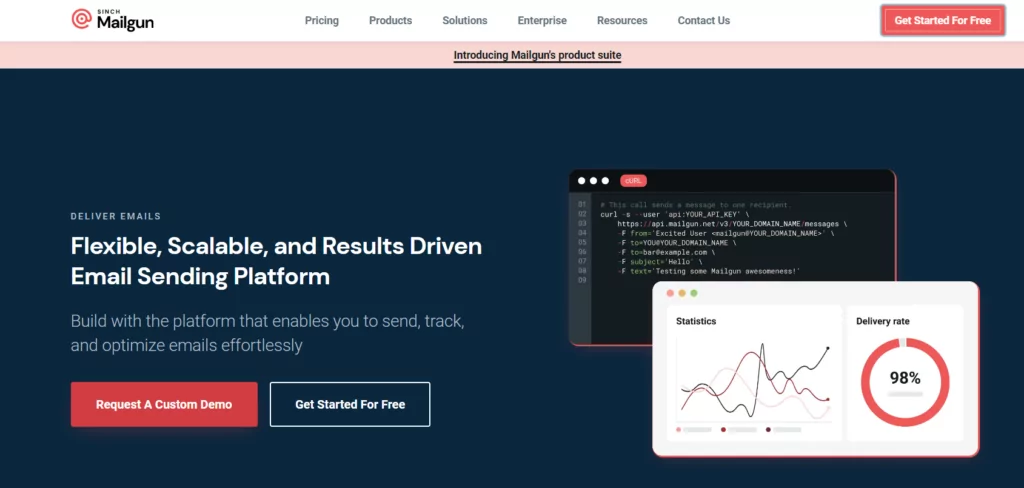
Having used Mailgun before, I found it to be an exceptional tool for managing email delivery and automating transactional emails. It’s best suited for developers and businesses looking for a flexible and reliable email infrastructure solution.
Interesting Features
- Robust API: I liked how Mailgun provides a powerful API that’s a dream for developers. It allows you to easily integrate email sending into your application, providing control over email workflows and customization.
- Email Validation: One feature that caught my attention is Mailgun’s email validation service. It’s invaluable for ensuring that your email list is clean and reducing bounce rates, saving time, and enhancing deliverability.
- Inbound Email Processing: I found it interesting that Mailgun offers inbound email processing. You can receive, parse, and process incoming emails, making it handy for building applications that interact with email.
- Webhooks and Event Tracking: Mailgun’s webhooks and event tracking system are impressive. It provides real-time data on email deliveries, bounces, opens, and clicks, helping you monitor and respond to email activity efficiently.
Potential Drawbacks
Email server reputation. Users have mentioned that they were assigned to a server with a poor reputation, so emails were flagged as spam.
What do you get for free?
Mailgun gives you a 30-day free trial with up to 5,000 email sends.
Pricing
Like other tools, Mailgun pricing is flexible based on volume needs. However, they do offer a tiered monthly service.
- Foundation ($35/mo) – includes 50,000 emails per month and access to restful API, webhooks, and advanced analytics.
- Scale ($90/mo) – includes 100,000 emails, plus SSO, and 5,000 email validations.
- Enterprise (consultative) – Mailgun works with you to determine a good custom plan.
4. Postmark
Best for: Providing in-depth content analysis
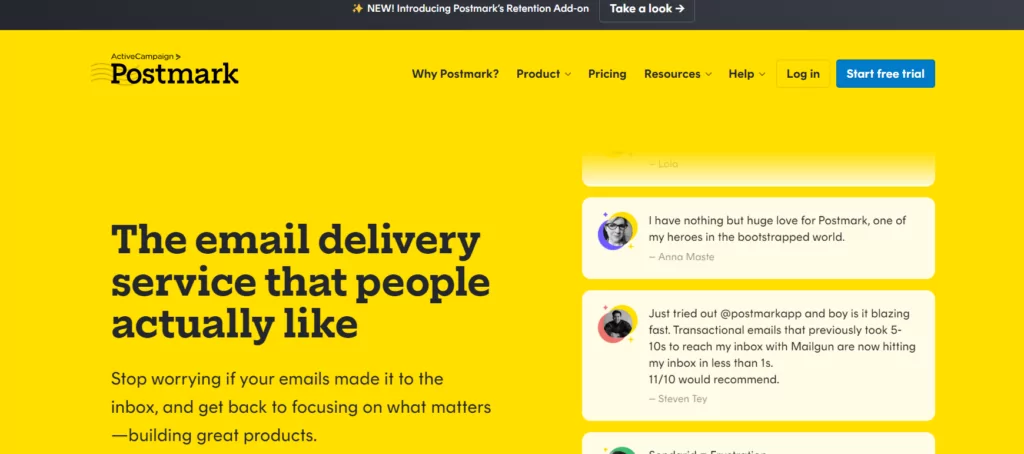
Postmark, in my experience, is a solid choice for businesses in need of dependable email delivery. It’s best for those prioritizing transactional emails and those who appreciate a no-nonsense approach to email delivery.
Interesting Features
- Exceptional Email Delivery: Postmark shines in ensuring emails hit the inbox reliably, thanks to its strong focus on delivery rates.
- Detailed Tracking: I liked how Postmark provides detailed tracking and analytics, allowing you to monitor email engagement effectively.
- Developer-Centric: It’s a developer’s dream with a well-documented API and developer-friendly tools for integrating email functionality into applications.
- Inbound Email Handling: It’s interesting that Postmark supports inbound email processing, simplifying the way you handle and respond to incoming messages.
- Content Analysis: Postmark offers content analysis to help improve deliverability by highlighting potential issues before sending emails.
Potential Drawbacks
- Marketing Limitations: Postmark is tailored more towards transactional emails, so if you’re looking for a marketing-focused solution, it may not cover all your needs.
What do you get for free
With PostMark you get to send 100 free emails. It’s not as much as some competitors.
Pricing
PostMark has a super simple pricing structure, with a pay-as-you-go model with an extra cost for specific add-ons like DMARC monitoring.
For 10,000 email sends it will cost $15 a month
5. MessageBird by SparkPost
Best for: Consistent, reliable delivery
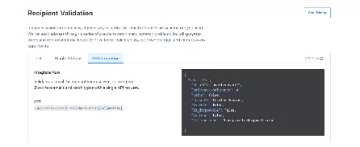
In my experience, MessageBird offers an impressive email API alongside its other communication services. It’s a versatile tool for businesses seeking to streamline their email communications and integrate it with their wider customer engagement strategy.
Interesting Features
- Unified Platform. I liked how MessageBird’s email API is part of a broader communication platform, allowing you to manage various communication channels in one place, offering a seamless customer experience.
- Transactional and Marketing. MessageBird covers both transactional and marketing emails, making it suitable for businesses looking to consolidate their email needs.
- Reliable Delivery. MessageBird has a strong reputation for reliable email delivery, which is crucial in maintaining good customer relationships.
- Developer-Friendly. The email API is well-documented and developer-friendly, simplifying integration into applications and workflows.
Potential Drawbacks
One of the downsides is that the solutions are priced separately. For example, if you wanted to use cloud sending and deliverability analytics, you’d have to get custom pricing.
What do you get for free?
With the free version of Cloud Sending, you get 500 emails per month for life.
Pricing
- Starter 1 ($20/mo) – 50,000 emails per month.
- Starter 2 ($30/mo) – 100,000 emails per month plus.
- Premier ($75/mo to $525/mo) – anywhere from 100,000 sends to 1.5 million.
6. MailerSend
Best for: Real-Time Analytics
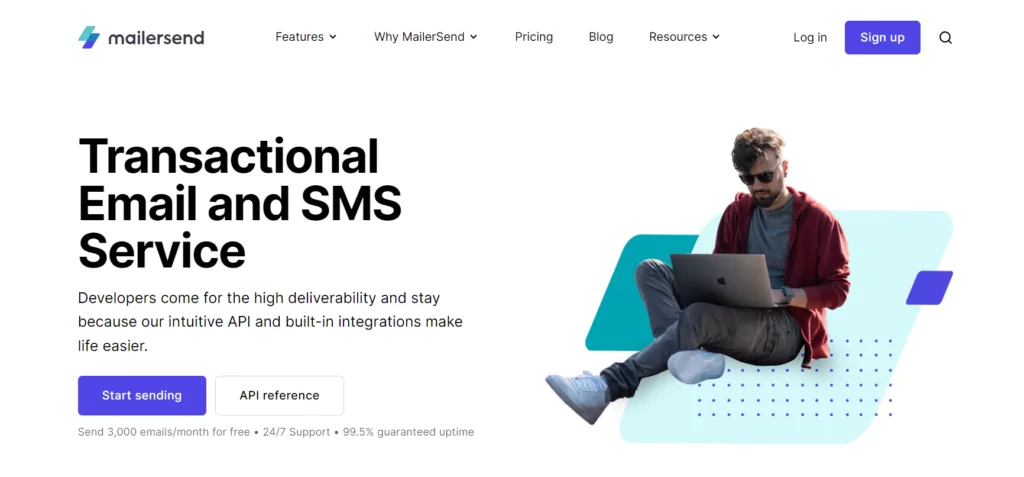
MailerSend is an excellent choice for businesses looking to streamline their transactional email-sending process and enhance email deliverability. It’s a valuable tool for developers and marketers who require an efficient and feature-rich platform.
- Reliable Email Delivery. I liked how MailerSend focuses on high email deliverability, ensuring that transactional emails reach recipients’ inboxes promptly.
- API Integration. MailerSend’s API is well-documented and user-friendly, making it straightforward for developers to integrate into their applications and services.
- Real-time Analytics. MailerSend offers real-time analytics and insights into email delivery, opens, and clicks, helping businesses understand and optimize their email performance.
- Dedicated IPs. The availability of dedicated IP addresses is beneficial for businesses that require full control over their sender reputation and email deliverability.
Potential Drawbacks
The pricing is not as flexible as some competitors
What do you get for free?
With MailerSend, you get to send 3,000 transactional emails for free – that’s a pretty good deal. You can add more without a subscription for only $1 per 1,000 emails.
Pricing
- Premium ($24/mo) – you get 50,000 email sends per month plus 100 SMS and 100 email verification credits.
- Enterprise (consultative) – MailerSend tailors a plan to your needs. Includes unlimited seats, domains, and templates.
7. AbstractAPI
Best for: Email verification

Abstract API is no stranger to creating great free APIs. From phone lookups to geolocation, Abstract is a developer’s best friend. Their email API allows you to verify and validate email addresses before sending – individually, or in bulk.
Interesting Features
- Detailed response parameters. Check for disposable emails, role-based emails, and spam traps. I like that the response is both easy to read and parse so that you can build automation from it. It also provides a real-time MX and SMTP check.
- Tons of documentation. The API documentation from Abstract is a great resource for developers. You’ll be able to quickly get started
- Bulk API endpoint. You can validate emails In bulk before you send them off through a transactional email or marketing automation tool.
Potential Drawbacks
Unlike others on this list, Abstract is limited to email verification. For this reason, it might be most suitable as an addition, combined with another email API.
What do you get for free?
With AbstractAPIs email validation API, you get 100 verifications for free.
Pricing
- Starter ($9/mo). Up to 5,000 calls per month and 3 requests per second.
- Standard ($49/mo). Up to 50,000 calls per month and 10 requests per second
- Business ($99/mo). 100,000 calls per month and 25 requests per second.
- Professional ($199/mo). 250,000 calls per month and 50 requests per second.
- Growth ($499). 750,000 calls per month and 100 requests
8. Mailboxlayer
Best for: Free email verification

MailboxLayer is a valuable tool for businesses looking to maintain clean email lists and ensure their emails reach the intended recipients. It’s best for organizations that prioritize email list quality and deliverability.
Interesting Features
- Email Verification. I liked how MailboxLayer verifies email addresses in real-time, helping to identify and remove invalid or disposable addresses, and reducing bounce rates.
- Detailed Responses. MailboxLayer provides detailed response codes, which is useful for understanding why an email address might be invalid or undeliverable.
- Bulk Validation. The service allows for bulk email validation, making it efficient for cleaning large email lists.
Potential Drawbacks
Only validation and verification. This tool is not for sending emails, only verification and validation.
What do you get for free?
1,000 email validations, syntax and typo checks, and quality scores.
Pricing
- Basic Plan – 14.99/mo – 5,000 verifications a month
- Professional Plan ($74.99/mo) – 50,000 API requests
- Enterprise Plus Plan ($249.99/mo) – 250,000 API requests.
Best Free Email APIs: Compared side by side
| Free | Rich Analytics | Marketing Automation | SMTP Service | Inbound Email Processing | |
|---|---|---|---|---|---|
| Mailjet | 200 Emails Per Day | Yes | Yes | Yes | Yes |
| SendGrid | 100 emails for free per day | Yes | Yes | Yes | No |
| Mailgun | 30 Day Trial, 5,000 email sends | Yes | Yes | Yes | Yes |
| Postmark | 100 emails every month. | Yes | No | Yes | Yes |
| MessageBird | 500 emails per months for life | Yes | No | No | No |
| MailerSend | 3,000 emails | Yes | No | Yes | Yes |
| AbstractAPI | 100 Verifications Total | No | No | No | No |
| MailboxLayer | 1,000 Verifications | No | No | No | No |
Conclusion
It’s not hard to find a quality email API. The key is to understand what you’re looking for, and how much you’ll need to scale. Some email APIs like Mailjet might keep a small business happy for close to free. Will you need email verification? You might need to pair with a combination of email APIs, like Abstract for verification, and another one for transactional sends.
Whatever your needs, we hope this guide serves you well.
Frequently Asked Questions
What is an email API?
An email API, or Email Application Programming Interface, is a set of rules and protocols that allow software applications to communicate with email servers. It enables the sending, receiving, and management of emails programmatically, making it a powerful tool for integrating email functionality into applications, websites, or platforms.
How does email verification work
Email verification is the process of checking the validity and deliverability of an email address. It typically involves a series of checks, including syntax validation, domain verification, and pinging the email server to ensure it can receive emails. The goal is to identify and remove invalid or non-existent email addresses from your list, improving email deliverability and reducing bounce rates.
Why is email validation important?
Email validation is crucial for maintaining a clean and engaged email list. It helps to improve email deliverability by ensuring that messages reach the intended recipients. Removing invalid emails reduces the risk of being flagged as a spam sender, enhances sender reputation, and leads to more successful email campaigns.
How can I integrate an email API into my application?
Integrating an email API into your application involves several steps:
– Choose a reputable email API provider.
– Sign up for an API key or access credentials.
– Implement the API’s functions in your application code to send, receive, and manage emails.
– Test the integration to ensure it works as intended.
– Monitor the API’s performance and make any necessary adjustments.
Are there any limitations to free email APIs?
Yes, free email APIs often have limitations, such as:
– Limited email sending volume.
– Rate limits on API requests.
– Lack of priority support.
– Branding in email footers.
– Restricted or no access to advanced features.
Businesses with high email volumes and specific requirements may find these limitations restrictive and may need to consider paid plans or alternative email API solutions to meet their needs.

Grant is a Solution Architect and SaaS product reviewer. His work concentrates solely on SaaS and technology, collaborating with clients in DevOps, Testing, Endpoint management, and cloud hosting.

